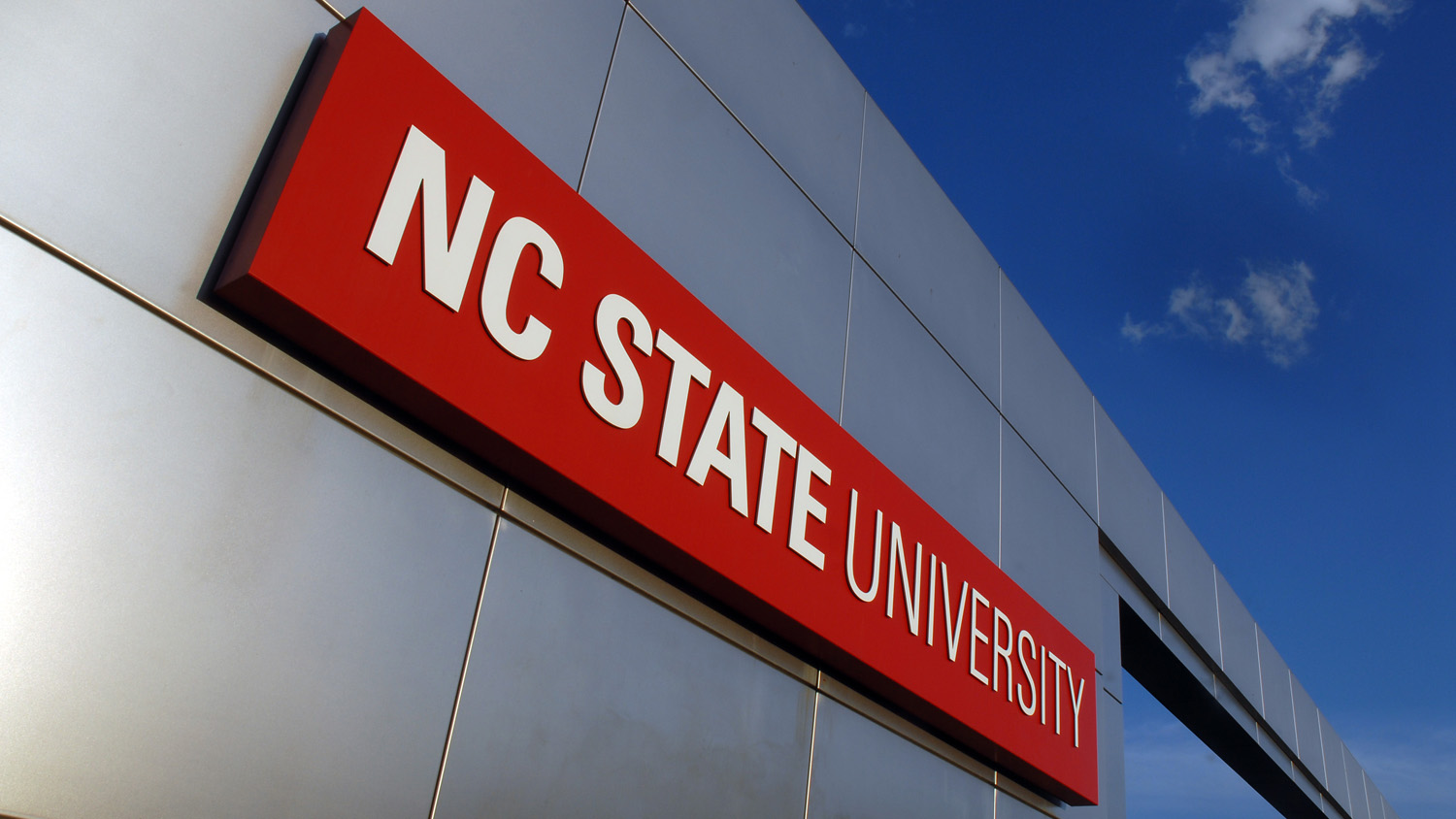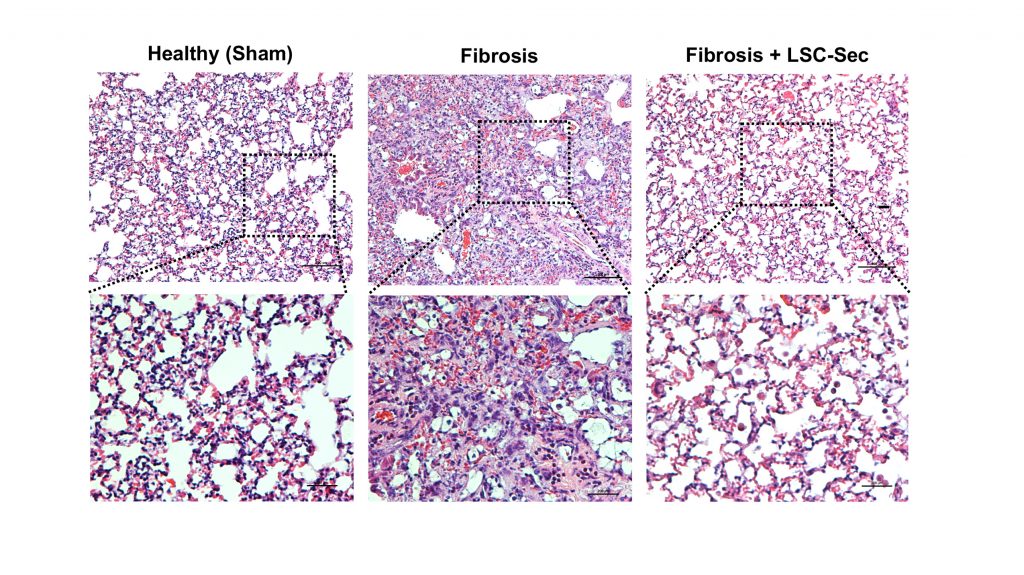Inhalation Therapy Shows Promise Against Pulmonary Fibrosis in Mice, Rats

For Immediate Release
A new study from North Carolina State University shows that lung stem cell secretions – specifically exosomes and secretomes – delivered via nebulizer, can help repair lung injuries due to multiple types of pulmonary fibrosis in mice and rats. The work could lead to more effective, less invasive treatment for human pulmonary fibrosis sufferers.
Pulmonary fibrosis is a fatal disease that thickens and scars healthy lung tissue, creating inflammation and replacing the lining of the lung cells with fibrotic tissue. In the last five years, Ke Cheng and his lab developed spheroid-produced lung stem cells (LSCs) as a potential therapeutic for pulmonary fibrosis. Cheng is the Randall B. Terry Jr. Distinguished Professor in Regenerative Medicine at NC State, a professor in the NC State/UNC-Chapel Hill Joint Department of Biomedical Engineering, and corresponding author of the research.
“The mixture of cells in LSCs recreates the stem cells’ natural microenvironment – known as the stem cell niche – where cells secrete exosomes to communicate with each other just as they would inside your body,” Cheng says. “LSCs secrete many beneficial proteins and growth factors known collectively as ‘secretome’ – exosomes and soluble proteins which can reproduce the regenerative microenvironment of the cells themselves. In this work we took it one step further and tested the secretome and exosomes from our spheroid-produced stem cells against two models of pulmonary fibrosis.”
Cheng and his colleagues tested lung spheroid cell secretome (LSC-Sec) and lung spheroid cell exosomes (LSC-Exo) against commonly used mesenchymal stem cells (MSCs) in mouse and rat models of chemically induced and silica- or particle-induced pulmonary fibrosis. The stem cell-derived therapeutics were delivered through a “stem cell sauna,” a nebulizer that allowed the therapeutic proteins, small molecules and exosomes to be inhaled directly into the lungs.

In the mouse model of chemically induced fibrosis, the researchers found that although inhalation treatment with either LSC-Sec or MSC-Sec led to improvements compared to the saline-treated control, LSC-Sec treatment resulted in nearly 50% reduction of fibrosis compared to 32.4% reduction with MSC-Sec treatment.
In the mouse model of silica-induced pulmonary fibrosis, LSC-Sec treatment resulted in 26% reduction of fibrosis compared to 16.9% reduction with MSC-Sec treatment.
The researchers also looked at rat models of both types of pulmonary fibrosis, and tested both LSC-exosome and LSC-Sec treatments against MSC-Exo with similar results. Additionally, they found that while LSC-exosome inhalation treatment alone can elicit a therapeutic effect similar to LSC-Sec treatment, the full secretome was still the most therapeutic.
“This work shows that lung spheroid cell secretome and exosomes are more effective than their mesenchymal stem cells counterparts in decreasing fibrotic tissue and inflammation in damaged lung tissue,” Cheng says. “Hopefully we are taking our first steps toward an efficient, non-invasive and cost-effective way to repair damaged lungs.
“Given the therapy’s effectiveness in multiple models of lung fibrosis and inflammation, we are planning to expand the test into more pulmonary diseases, including chronic obstructive pulmonary disease (COPD), acute respiratory distress syndrome (ARDS), and pulmonary hypertension (PH).”
“The finding that products released by lung stem cells can be just as efficacious, if not more so, than the stem cells themselves in treating pulmonary fibrosis can be a major finding that can have implications in many other diseases where stem cell therapy is being developed,” says Kenneth Adler, Alumni Distinguished Graduate Professor at NC State and a co-author of the paper.
The work appears in Nature Communications and was supported by the National Institutes of Health and the American Heart Association. Post-doctoral research scholar Uyen Dinh is first author.
-peake-
Note to editors: An abstract follows.
“Inhalation of Lung Spheroid Cell Secretome and Exosomes Promotes Lung Repair in Pulmonary Fibrosis”
DOI: 10.1038/s41467-020-14344-7
Authors: Phuong-Uyen C. Dinh, Dipti Paudel, Hayden Brochu, Kristen D. Popowski, M. Cyndell Gracieux, Jhon Cores, Ke Huang, M. Taylor Hensley, Erin Harrell, Adam C. Vandergriff, Arianna K. George, Raina T. Barrio, Shiqi Hu, Tyler A. Allen, Kevin Blackburn, Michael B. Goshe, Xinxia Peng, Lauren V. Schnabel, Kenneth B. Adler, Ke Cheng, North Carolina State University; Thomas G. Caranasos, Leonard J. Lobo, University of North Carolina at Chapel Hill
Published: Online in Nature Communications
Abstract:
Idiopathic pulmonary fibrosis (IPF) is a fatal and incurable form of interstitial lung disease in which persistent injury results in scar tissue formation. As fibrosis thickens, the lung tissue loses the ability to facilitate gas exchange and provide cells with needed oxygen. Currently, IPF has few treatment options and no effective therapies, aside from lung transplant. Here we present a series of studies utilizing lung spheroid cell-secretome (LSC-Sec) and exosomes (LSC-Exo) by inhalation to treat different rodent models of lung injury and fibrosis. Analysis reveal LSC-Sec and LSC-Exo treatments could attenuate and resolve bleomycin- and silica-induced fibrosis by reestablishing normal alveolar structure and decreasing collagen accumulation and myofibroblast proliferation. Additionally, LSC-Sec and LSC-Exo exhibit superior therapeutic benefits than their counterparts derived from mesenchymal stem cells in some measures. We show that an inhalation treatment of cell secretome and exosome exhibited therapeutic potential for lung regeneration in two experimental models of pulmonary fibrosis.


